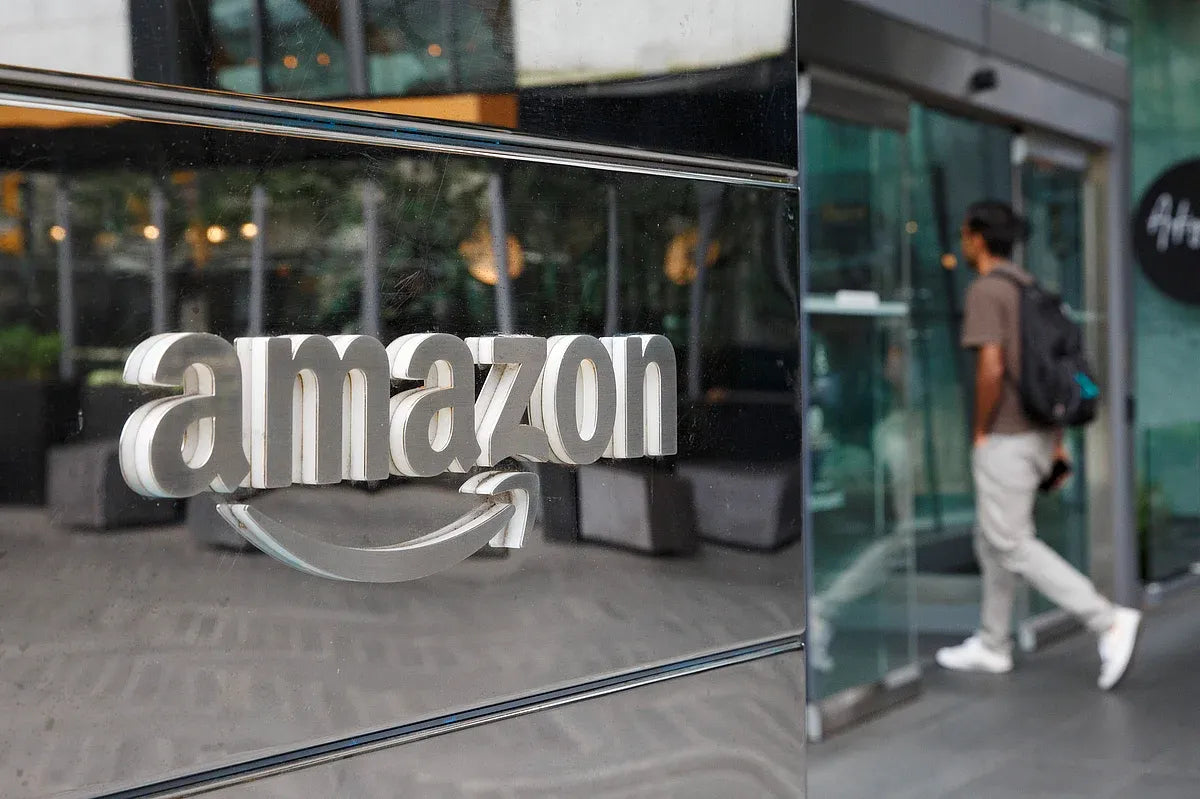
The AI Investment Paradox: Amazon's Challenges Amidst a Tech Boom
Table of Contents
- Key Highlights:
- Introduction
- The AI Stock Market Landscape
- Amazon's Diverse Business Model: Opportunities and Challenges
- The Role of Robotics in Amazon's Future
- Financial Performance and Future Outlook
- Market Sentiment and Investor Confidence
- Conclusion: The AI Dilemma for Amazon
- FAQ
Key Highlights:
- Amazon's stock has underperformed compared to peers, gaining only 3% this year, despite significant investments in artificial intelligence (AI).
- In contrast, competitors like Meta Platforms and Nvidia have seen stock surges exceeding 20%, highlighting a disparity in market perception of AI effectiveness.
- Amazon's extensive capital expenditures in AI and robotics, alongside challenges in its e-commerce sector, could reshape its operational landscape over the next decade.
Introduction
As the technological landscape rapidly evolves, artificial intelligence (AI) has become a pivotal force that distinguishes market leaders from laggards. For investors and analysts alike, the focus on how companies leverage AI has intensified, particularly in light of recent stock performance trends. Amazon.com Inc., a juggernaut with diverse operations spanning e-commerce, cloud computing, and advertising, has committed substantial resources to AI initiatives. Yet, its stock performance has not reflected this investment, leaving stakeholders questioning the efficacy of these expenditures.
Despite Amazon's ambitious AI strategies, including advancements in its cloud services and retail operations, the company has struggled to gain investor confidence. The upcoming earnings report is poised to shed light on whether Amazon can demonstrate profitability improvement through its AI initiatives. This article explores the current dynamics of Amazon's AI investments, the implications for its various business segments, and how these factors position the company against its competitors in an increasingly AI-driven market.
The AI Stock Market Landscape
The recent resurgence of AI as a focal point in the tech sector has created a distinct divide among companies in the stock market. Heavyweights like Meta Platforms, Microsoft, and Nvidia have emerged as frontrunners, capitalizing on the AI boom to boost their stock prices significantly. For instance, Meta's stock has surged over 20% this year, a stark contrast to Amazon's meager 3% increase. This disparity raises questions about investor sentiment and the tangible impact of AI on different business models.
Investors are particularly cautious with Amazon, as the company’s expansive investments in AI have yet to translate into clear profitability gains. Brian Recht, a portfolio manager at Janus Henderson, emphasizes that while Amazon's spending on AI is considerable, investors are waiting for concrete evidence of how these initiatives will enhance the company's bottom line. This skepticism underscores a broader trend where companies must not only invest in innovative technologies but also effectively communicate their value to shareholders.
Amazon's Diverse Business Model: Opportunities and Challenges
Amazon operates a multifaceted business model, with key segments including e-commerce, Amazon Web Services (AWS), and advertising. Each segment presents unique opportunities for AI integration, but also distinct challenges.
E-commerce: A Sector Under Pressure
Despite Amazon's dominance in the e-commerce space, the division faces significant challenges that could hinder its growth. Tariffs and increased competition are squeezing profit margins, making it crucial for Amazon to enhance productivity and efficiency. AI presents a promising solution, with applications ranging from personalized advertising to optimizing supply chain logistics.
The company’s potential to utilize AI in its retail operations could be transformative. For example, AI-driven algorithms could significantly enhance product recommendations, helping consumers navigate the vast array of choices on the platform. Additionally, AI technologies like the Rufus chatbot aim to streamline customer interactions by assisting shoppers in comparing products, prices, and reviews more efficiently.
Cloud Computing: The AI Powerhouse
AWS remains the cornerstone of Amazon’s profitability, and its growth trajectory is increasingly tied to AI advancements. As businesses accelerate their adoption of AI technologies, AWS is well-positioned to capture this demand. The cloud division's ability to offer robust AI solutions could significantly bolster Amazon's revenue streams.
However, the recent announcement of job cuts in AWS raises concerns about the company's broader strategy. The cuts indicate a shift towards automation, with CEO Andy Jassy signaling an expectation for workforce reductions as AI takes on more roles. This transition could yield substantial cost savings, but it also underscores the precarious balance between innovation and workforce stability.
The Role of Robotics in Amazon's Future
Robotics is another frontier where Amazon is making substantial investments, promising to enhance operational efficiency in logistics and warehousing. The introduction of humanoid robots capable of navigating complex environments reflects Amazon's commitment to automating its delivery processes. According to Bank of America, these robotics initiatives could unlock over $7 billion in annual savings by 2032.
As Amazon continues to innovate in this space, the potential impact on the retail business could be significant. Analysts from Morgan Stanley have posited that Amazon's retail division might be the "most under-appreciated GenAI beneficiary in the tech space." If executed effectively, these robotics initiatives could streamline operations, reduce costs, and ultimately enhance customer satisfaction.
Financial Performance and Future Outlook
As Amazon prepares to release its second-quarter earnings report on July 31, analysts anticipate earnings per share (EPS) of $1.32 on revenues of $162 billion. This forecast suggests moderate growth compared to previous years, reinforcing the notion that Amazon is navigating a challenging economic landscape. The broader tech sector is expected to experience higher growth rates, with the average EPS growth for comparable companies projected at 15%.
Despite substantial capital expenditures, which are expected to exceed $104 billion this year, Amazon must demonstrate that these investments yield tangible results. The company’s aggressive spending strategy includes investments in data centers and logistics infrastructure, indicating a long-term vision for growth. However, the immediate challenge lies in translating these investments into increased profitability.
Market Sentiment and Investor Confidence
The current market sentiment surrounding Amazon reflects a cautious optimism tempered by uncertainty. While the company's long-term investments in AI and robotics indicate a forward-thinking strategy, investors are keenly aware of the immediate financial implications. The disparity between Amazon's stock performance and that of its competitors illustrates the precarious nature of investor confidence.
As AI continues to reshape the business landscape, companies that can effectively leverage this technology are likely to emerge as winners. For Amazon, the challenge lies not only in the execution of its AI initiatives but also in how it communicates the value these investments bring to stakeholders. The upcoming earnings report will be a critical test for Amazon, as it seeks to provide evidence of its AI capabilities and the potential for future profitability.
Conclusion: The AI Dilemma for Amazon
Amazon's journey through the evolving AI landscape encapsulates a broader narrative within the tech industry. While the company is making significant strides in AI and robotics, the market's response has been lukewarm, raising questions about the effectiveness of these initiatives. As competitors experience substantial stock gains, Amazon must navigate a complex web of challenges and opportunities.
The emphasis on AI as a differentiator in technology investment is clear, but for Amazon, the path forward requires not only innovation but also a strategic approach to stakeholder engagement. As the company prepares for its financial disclosures, the outcome will serve as an indicator of its ability to harness AI's potential while addressing the immediate pressures of profitability and growth.
FAQ
What is the current stock performance of Amazon compared to its competitors?
Amazon's stock has gained approximately 3% this year, while competitors like Meta Platforms and Nvidia have seen increases of over 20%, highlighting a significant gap in market perception.
How is Amazon utilizing AI in its operations?
Amazon is investing heavily in AI across various segments, including its cloud services (AWS) and e-commerce platform. Initiatives include personalized product recommendations, improved customer service through chatbots, and advancements in logistics and robotics.
What are the projected earnings for Amazon's upcoming quarterly report?
Analysts expect Amazon to report earnings per share of $1.32 on revenues of $162 billion for the second quarter, reflecting moderate growth amidst challenges in the broader market.
What are the implications of Amazon's robotics initiatives?
Amazon's investments in robotics are aimed at improving operational efficiencies in logistics and warehousing, with potential savings of over $7 billion annually by 2032, according to estimates from Bank of America.
Why are some investors cautious about Amazon's AI investments?
Investors are seeking clear evidence that Amazon's extensive investments in AI will lead to improved profitability. The company's stock performance has not yet reflected these investments, leading to cautious sentiment among stakeholders.
POWER your ecommerce with our weekly insights and updates!
Stay aligned on what's happening in the commerce world
Email Address
Handpicked for You

26 August 2025 / Blog
Building Your Courier Empire: A Complete Guide to Starting a Successful Delivery Business
Read more
26 August 2025 / Blog
Unlocking Efficiency: Understanding the Differences Between Procurement and Purchasing in Business
Read more
26 August 2025 / Blog


